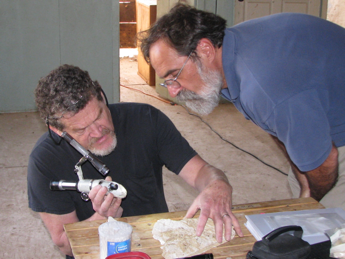 My first engagement with vernacular architecture studies began during my years as an undergraduate in anthropology and historical archaeology at Brown University in the early 1970s. I was fortunate to be at Brown when James Deetz was teaching there and also working at Plimoth Plantation, where he and Henry Glassie transformed the museum’s presentation and interpretation of early New England culture and material life, especially architecture. At Brown I also had the privilege of studying with an illustrious cohort of fellow undergraduate- and graduate students, many of whom have made significant contributions to the fields of historical archaeology and vernacular architecture studies during the past half century.
My first engagement with vernacular architecture studies began during my years as an undergraduate in anthropology and historical archaeology at Brown University in the early 1970s. I was fortunate to be at Brown when James Deetz was teaching there and also working at Plimoth Plantation, where he and Henry Glassie transformed the museum’s presentation and interpretation of early New England culture and material life, especially architecture. At Brown I also had the privilege of studying with an illustrious cohort of fellow undergraduate- and graduate students, many of whom have made significant contributions to the fields of historical archaeology and vernacular architecture studies during the past half century.
After several years working as an archaeologist, I undertook graduate studies in the American and New England Studies Program at Boston University, benefitting greatly from coursework and engagement with Dr. Abbot Lowell Cummings, then director of the Society for the Preservation of New England Antiquities and founding member and first president of the VAF. I attended my first VAF conference in 1980 and have been an active and committed member ever since (except for the nearly nine years from 2004 -2012 when I lived and worked in Ukraine), serving on the VAF Board of Directors twice (1996-1999 and 2016- present), and chairing the VAF annual conference in Newport, RI, in 2001.
I have long had a close relationship with archaeological and architectural fieldwork, and joined a number of my VAF colleagues in the continued development and practice of buildings archaeology. Over the years I have organized and taught (with other VAF colleagues) six field schools in buildings archaeology throughout New England. During the past several years I have been involved with VAF’s Orlando Ridout V Fieldwork Fellowship awards program as chair and committee member, encouraging and supporting fieldwork as a key component of vernacular architecture studies.
The VAF and its members have been an important influence on my scholarly and professional development as an historian and interpreter of material culture and material life, both in the past and in the present. It has provided both inspiration and refuge. I am deeply indebted to my teachers, colleagues, and friends for all that I have learned with them and from them, and am committed to passing that knowledge on to others – students, scholars, and stewards of historical places, objects, and collective/contested memory.